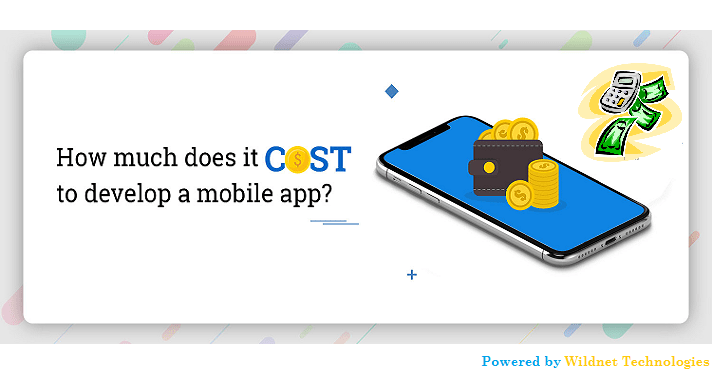Innovation is key in the world of business. But how can you ensure that your innovative ideas
are viable?This tool validates the feasibility of a business idea or project. It’s a critical step in the decision-making process, helping to minimize risks and secure buy-in from stakeholders.
But what exactly is a POC in business? How is it created and evaluated?
In this article, we’ll delve into these questions and more. We’ll explore the role of POC in business, providing a comprehensive understanding of its importance and application.
Whether you’re a business owner, project manager, or investor, this guide will equip you with the knowledge you need to leverage POC in your business strategy.
What is POC in Business?
POC, or Proof of Concept, refers to a preliminary model that demonstrates the feasibility of an idea or project. In business, it is a vital tool for testing innovative concepts before fully committing resources.
The primary goal of a POC is to validate an idea’s potential success and viability. By doing so, businesses can identify potential challenges early on. This process aids in making informed decisions and highlights areas needing adjustments or further development. POC is distinct from other phases, such as prototyping or pilot testing. It focuses on proving core functionalities or concepts before entering more detailed project stages.
The Purpose of a POC in Business Innovation
A POC plays a crucial role in business innovation by testing the viability of new ideas. It enables companies to explore creative solutions without incurring high costs or risks associated with full-scale development.
This approach is vital for encouraging innovation and reducing uncertainty. By confirming that a concept works in a controlled setting, businesses gain confidence to move forward. This also helps align the innovation strategy with market needs, ensuring a more effective deployment of resources and time. Companies can secure stakeholder support and investment through a successful POC, paving the way for further development and eventual market entry.
Steps to Creating a Successful POC
Creating a successful POC requires a structured approach. The first step is to define the objectives clearly. Understanding what you want to achieve is crucial for assessing the concept’s success.
Once objectives are set, the next phase involves designing the POC. This includes detailing the scope, selecting the necessary resources, and establishing the criteria for evaluation.
Execution and continuous monitoring are critical for achieving the desired outcomes. Keep track of progress and gather data for analysis. After completing the POC, analyzing the results will guide you in your next steps. This stage helps determine whether the POC met its objectives and provides insight for future actions.
Iterating based on feedback is essential. Use insights gained to refine the concept, make necessary improvements, or pivot to alternative approaches. Following these steps can enhance the chances of developing a POC that effectively informs decision-making processes.
POC vs. Prototype vs. Pilot: Understanding the Differences
Proof of Concept (POC), prototype, and pilot serve different purposes in product development. Each has a unique role, though their objectives may overlap. Understanding these distinctions can better guide project phases.
A POC validates an idea’s feasibility in a business setting. It’s more about proving the concept works in a controlled setup. Meanwhile, a prototype is a working model showcasing design features and functionalities. It’s meant to test user interaction. A pilot, on the other hand, is a preliminary launch. It implements the full project in a limited scope to test real-world viability. Knowing these differences helps in choosing the right approach for each stage.
Evaluating the Success of a POC
The success of a Proof of Concept (POC) hinges on meeting its set objectives. Clear, measurable goals help determine whether the concept is viable. Was the POC able to demonstrate its intended functionality effectively?
Analyzing the data collected from the POC is crucial. This involves assessing both qualitative feedback and quantitative results. Did the POC prove the idea’s technical and market feasibility? Engaging relevant stakeholders during this evaluation offers diverse perspectives. Their insights can be invaluable in making the final decision to proceed or refine the concept further.
Challenges and Limitations of POCs
Proof of Concept (POC) initiatives face several challenges. One major issue is the limited scope. POCs often focus on specific elements, potentially overlooking broader business implications. This can lead to unanticipated challenges when scaling.
Resource allocation is another concern. Conducting a POC requires time, money, and expertise. For small businesses or startups, these resources can be hard to justify. Additionally, stakeholder expectations may need to be aligned. There’s a risk of overestimating the success of a POC, which can lead to overconfidence and missteps in further development stages. Recognizing these limitations early can guide better planning and execution.
The Role of POC in Securing Funding and Stakeholder Buy-In
Securing financial backing can be daunting for any business initiative. A well-executed Proof of Concept (POC) showcases the feasibility and potential of your idea, thus easing this process. Investors are more likely to support a project when they see tangible evidence of its potential for success.
Additionally, a successful POC can help gain stakeholder confidence. It provides concrete data and real-world insights that validate your business concept. This validation can persuade stakeholders to support and invest in the project, facilitating smoother project advancement and execution.
POC in Agile Project Management and Lean Startup Methodology
Flexibility is key in agile project management. POCs play a crucial role in this environment by allowing teams to test and iterate their ideas swiftly. This iterative process aligns perfectly with agile methodologies, enabling teams to refine projects efficiently.
The lean startup methodology emphasizes “build-measure-learn” cycles, making POCs fundamental. They help test assumptions with minimal resources and time. By implementing POCs, startups can quickly validate product-market fit, reducing risks and preventing unnecessary expenditure on unproven ideas. This approach helps maintain focus on viable business opportunities while encouraging innovation.
Case Studies: Examples of Successful POCs Across Industries
Industries worldwide have embraced POCs as a tool for innovation and progress. In the technology sector, a major tech company developed a POC for artificial intelligence-driven customer support. This initial exploration uncovered valuable insights, paving the way for full-scale deployment and customer satisfaction improvements.
A hospital used a POC to test a remote patient monitoring system in the healthcare industry. The POC demonstrated feasibility, leading to enhanced patient care and operational efficiency. These examples highlight how POCs can validate ideas, adapt strategies, and drive successful outcomes across diverse sectors.
Conclusion: Integrating POC into Your Business Strategy
Integrating POCs into your business strategy is vital for fostering innovation and informed decision-making. By validating ideas early, POCs minimize risks and enhance project outcomes. Embracing POCs allows businesses to fine-tune products, ensuring they effectively meet market needs.
To leverage POCs successfully, set clear objectives aligned with your strategic goals. Empower teams to explore innovative solutions, using POCs as a foundation for scaling operations. This agile approach drives growth and builds a culture of continuous improvement. Embrace POCs to unlock new opportunities and achieve long-term success in the ever-evolving business landscape.
Wildnet Technologies is a leading Design and Development Company in India that has helped 4,100+ clients complete their 8,000+ development projects, whether website, app, or custom software development.
Read More
- PoC, Prototype and MVP: How do they differ?
- The Cost of Mobile App Development in 2024: A Must-Know for Businesses
- Application Maintenance & Updates in 2024: Update or Phase Out! (The complete guide)
- How to Build a Mobile App for Your Company? 9 Hacks of 2024.
- The World’s First AI Software Engineer Devin & India’s First Devika
- Understanding the Fundamentals of White Box Testing
Faq
Ques1. What do you mean by Point of Contact (POC) in the business world?
In short, a POC is an employee focused on a particular task whom the clients or other relevant employees may contact for guidance or information regarding a specific project or customer.
Ques2. Does POC matter?
The POC plays an important role in facilitating communication flow and organizing information around a single point, greatly cutting any possible miscommunications between the parties involved.
Ques3. What role do POCs assume?
A POC oversees the participant’s interface management, communications interface updates, and client inquiries interface and even includes internal interface measures to attain the project’s objectives.
Ques4. How do POCs adaptingly connect to clients?
POCs empower clients to have one contact for all information, increasing trust levels and, therefore, improving client satisfaction through regular responsive assistance.
Ques5. Is it possible to have more than one POC in a single project?
Yes, a large-scale project can have several POCs for various components, but more often than not, there will be a single primary POC who is in charge of the overall coordination.






